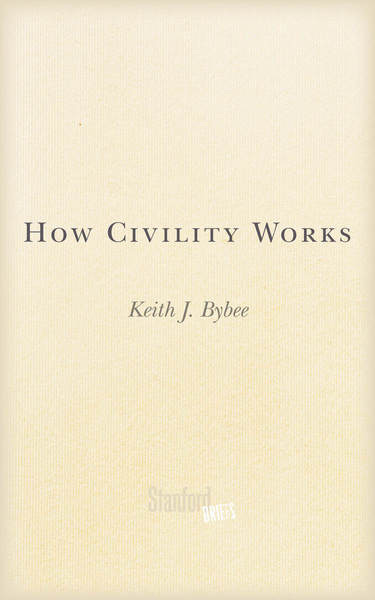Assembly, Protest, and Civility
Does the right to assembly include the right to be rude?

In previous posts, I explored the contours of the First Amendment’s right of assembly. I noted how assembly is crucial to the ways that many people develop a sense of belonging. I also considered the importance of collective action protected by the right of assembly.
The benefits of assembly are not without costs—including the risk and instability that protest and dissent introduce to majoritarian norms and polite society. But how much incivility is covered by the right of assembly?
In the News
This past March, the Massachusetts Supreme Judicial Court issued an important decision, Barron v. Kolenda. In 2018, town officials asked Louise Barron to leave a town board meeting after she called them “drunken sailors” and described one of them as “a Hitler.” The officials relied on a local ordinance requiring attendees at a town meeting to be “respectful and courteous, free of rude, personal or slanderous remarks.” Barron challenged her expulsion under Article 19 of the Massachusetts Declaration of Rights, which guarantees the right “in an orderly and peaceable manner, to assemble to consult upon the common good.”
The court sided with Barron, noting that the town’s civility code was directed at core political speech and stood in tension with the history and theory underlying the state’s assembly right:
"Peaceable and orderly" is not the same as "respectful and courteous." There was nothing respectful or courteous about the public assemblies of the revolutionary period. There was also much that was rude and personal, especially when it was directed at the representatives of the king and the king himself.
The court emphasized: “In this country, we have never concluded that there is a compelling need to mandate that political discourse with those with whom we strongly disagree be courteous and respectful.”
An article from the Brennan Center lauded the opinion and suggested “there’s good reason to pay more attention to the right to assembly,” including the assembly provisions in forty-seven state constitutions, most of which are “textually quite distinct” from the federal First Amendment.
At Reason, J.D. Tuccille suggested that Barron “has implications for contemporary government officials who frequently object to the strong language in which they're criticized.” Tuccille elaborated that “‘discourteous, rude, disrespectful, or personal speech about government officials and governmental actions’ is evidence that much is at stake and that people care deeply.”
In My Head
The decision in Barron v. Kolenda is clearly correct in light of free speech precedent. The First Amendment protects core political speech subject only to reasonable time, place, and manner restrictions, none of which were implicated by Louise Barron’s speech. What I find more interesting is the opinion’s reliance on the theory and history of the right of assembly. It is not evident to me that Barron by herself constituted an assembly, which requires more than one person. But it may be that the wording of the Massachusetts constitutional provision separately protects some actions by a single individual at the nexus of assembly and petition.
Regardless, the focus on assembly sheds light on why political speech can be disruptive and unsettling to those in power. But this observation raises a strategic question of when deliberate incivility is more useful than complying with civility norms. Political science professor Keith Bybee has called the former “strategic incivility” in his book, How Civility Works. Sometimes, when calls for civility are used by those in power to impede change, disrupting civility norms might point to “a new code of public conduct.” And we have plenty of historical examples of successfully disruptive incivility, including Anti-Federalists, suffragettes, civil rights activists, and Black Lives Matter protesters.
But too much disruption—pushing the wrong words prematurely or without enough social context—can backfire. Strategic incivility may be more art than science, but it is not without its own set of rules. More generally, civility norms can only tolerate so much incivility before they collapse entirely, at which point strategic incivility will no longer be very strategic. There are certainly occasions for angry protests and disruptive speech. But it may be that complying with civility norms will prove more effective over time.
In a review of Bybee’s book, I noted that the contingent nature of civility is also linked to the ways that the meaning of words changes over time:
When Walter Chaplinsky called the town marshal a “damned racketeer” and “damned Fascist,” the Supreme Court reasoned [in the 1942 decision, Chaplinksy v. New Hampshire] that “argument is unnecessary to demonstrate that the appellations . . . are epithets likely to provoke the average person to retaliation, and thereby cause a breach of the peace.” Today, it is hard to imagine Chaplinsky’s words provoking someone to physical violence, let alone sending him to jail for uttering them.
The fact that words assume different meanings over time further complicates efforts at strategic incivility, as we will not always know when an effort at civility or incivility will be perceived as such.
It might also be the case that in our increasingly fractured society, more of us should focus on preserving civility rather than attempting to subvert it. There will be moments that call for strategic incivility, but perhaps far more occasions in which practicing civility will be the more principled and pragmatic response.
In the World
Keith Bybee’s How Civility Works is a fascinating reflection on the nature of civility. He describes civility as “a code of public conduct” but notes the contingent nature of this code: “as society grows more heterogeneous and complex, conceptions of civility shift, come into conflict, and resolve into new forms.” These contingencies lead to a series of important questions about maintaining civility norms across change, how to determine when to engage in strategic incivility, and how social and legal norms work together to enforce civility norms. Bybee’s book doesn’t give us all of the answers to these questions, but he helps to show why they matter and what makes them so difficult to resolve.




“The fact that words assume different meanings over time further complicates efforts at strategic incivility, as we will not always know when an effort at civility or incivility will be perceived as such.”
Perhaps calling someone “a Hitler” in 2023 is accepted as strategically uncivil.
If a neighbor calls me a Hitler, I might shrug it off. If B’nai B’rith calls me Hitler, I take notice. I consider Louise Barron was doing little more than satisfying Godwin’s Law, but for someone my age, a son of the World War II generation, the label is still inflammatory and may tempt descending into a deeper level of incivility.
Revolutionary incivil speech instigated the trashing of Lt. Governor Hutchinson’s house in 1765, even while he was not himself a big supporter of The Stamp Act. Yes, there is a precedent for incivil soeech, and it must be protected, lest we silence all dissent and dictate only those words that comply with goodthink. But there are risks.